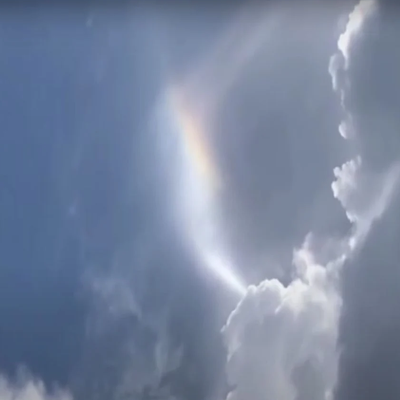Crown flash is a rarely observed meteorological phenomenon involving “The brightening of a thunderhead crown followed by the appearance of aurora-like streamers emanating into the clear atmosphere”.
The current hypothesis for why the phenomenon occurs is that sunlight is reflecting off, or refracting through, tiny ice crystals above the crown of a cumulonimbus cloud. These ice crystals are aligned by the strong electric field effects around the cloud, so the effect may appear as a tall (sometimes curved) streamer, pillar of light, or resemble a massive flash of a searchlight/flashlight beam. When the electric field is disturbed by electrical charging or discharging (typically, from lightning) within the cloud, the ice crystals are re-oriented causing the light pattern to shift in a characteristic manner, at times very rapidly and appearing to ‘dance’ in a strikingly mechanical fashion.
The effect may also sometimes be known as a “leaping sundog”. As with sundogs, observation of the effect is dependent upon the observer’s position – it is not a self-generated light such as seen in a lightning strike or aurora, but rather a changing reflection or refraction of the sunlight. Unlike sundogs however (which are also caused by refraction of sunlight through ice crystals), the crown flash effect appears localised directly above the cloud.






